8 Types of Swallow Birds You Should Know
Updated: Jun. 21, 2022
From purple martins to barn swallows, find out how to spot and identify 8 members of the swallow bird family during summer.
Meet the Swallow Bird Family
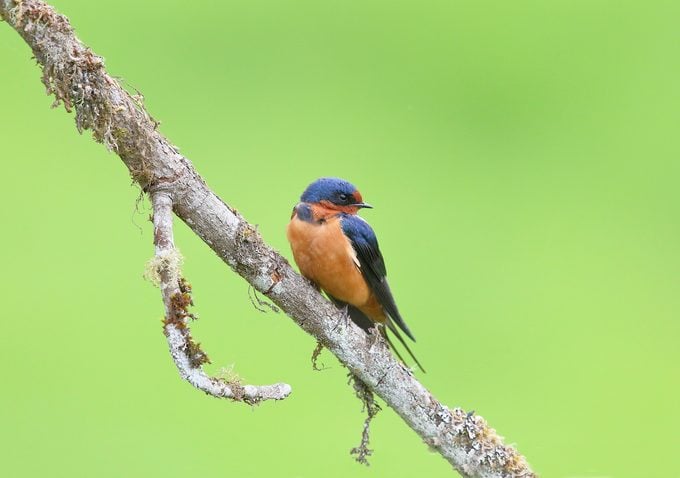
An old saying goes, “One swallow doesn’t make a summer.” Fortunately, we don’t have to settle for just one species. During the summer, members of the swallow bird family are common all over North America—from the tropical borders to the chilly Arctic. Swallows are incredibly graceful songbirds, able to swoop and glide for hours as they chase small insects in midair. Most are very sociable, often gathering in flocks on roadside wires whenever they’re not flying. Beloved by bird-watchers, the birds are often found close to people, nesting around houses and farms.
Learn about swallows nests and nesting habits.
Barn Swallow
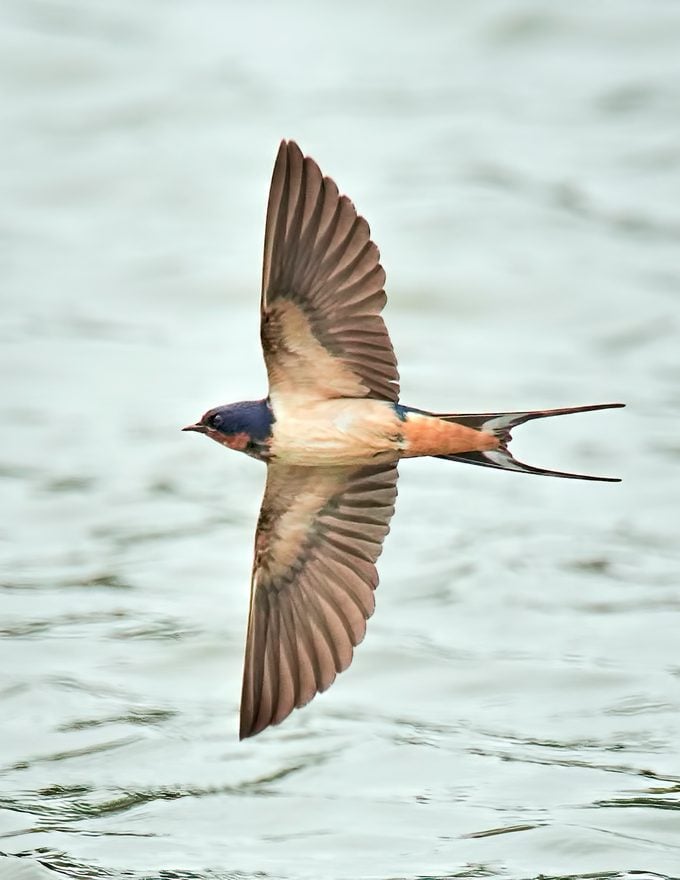
Historically, orange and blue colored barn swallows placed their nests inside shallow caves or on cliff faces protected by overhanging rocks. They looked for spots sheltered from the rain because their nests are made mostly out of mud pellets, plastered in place and allowed to dry.
When European settlers began building barns, these swallow birds quickly learned to use these shelters to their advantage. Today, almost all barn swallow bird nests are placed on man-made structures: inside barns or sheds and under the eaves of houses, bridges or docks. Such safe sites are much more abundant than naturally protected sites ever were, so barn swallows are undoubtedly more common today than they were several hundred years ago.
Discover 8 different kinds of bird nests and how to spot them.
Cliff Swallow

The cliff swallow, true to its name, used to nest mainly on the sheltered sections of cliffs, with many jug-shaped mud nests plastered close together. Although some colonies still persist in natural sites, most cliff swallows now nest on the outsides of buildings or underneath bridges. These birds are found from Alaska to Mexico and from coast to coast, but they’re generally more common in the West.
Cave Swallow
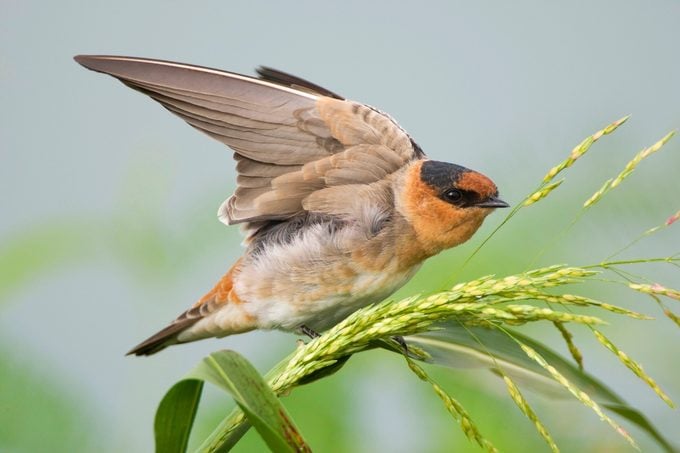
A related bird, the cave swallow, has a more limited range. As recently as 45 years ago, cave swallows were quite rare in the United States, nesting in a few caves in Texas and at Carlsbad Caverns National Park in New Mexico. Sometime around 1980, these birds discovered that they could also build their nests inside highway culverts, which resembled little caves. They also began nesting under bridges and other structures. Now they’re common summer birds across most of Texas, spilling over into Louisiana, Oklahoma and New Mexico.
Learn 7 fascinating facts about swift birds.
Tree Swallow
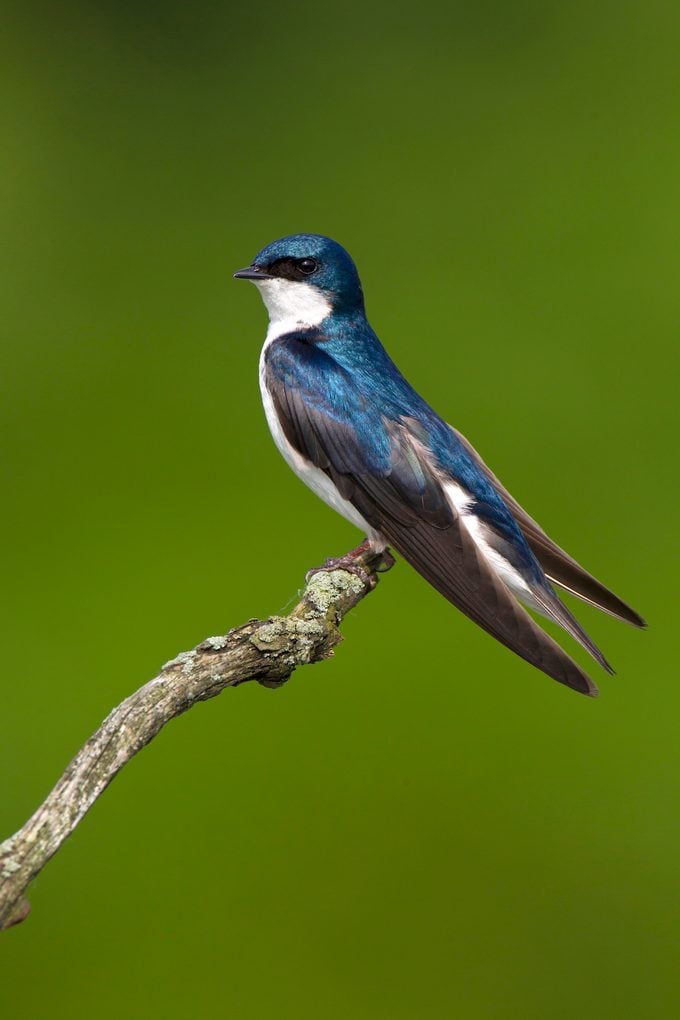
Steel blue on the top and snowy white below, the tree swallow was named for its habit of building its nest inside the holes of trees. These types of natural cavities are becoming harder to find in many areas as dead trees and limbs are removed from yards and parks. But the tree swallow benefits from a happy coincidence—it uses exactly the same size of nest hole that bluebirds prefer.
Is that a swallow in my bluebird box?
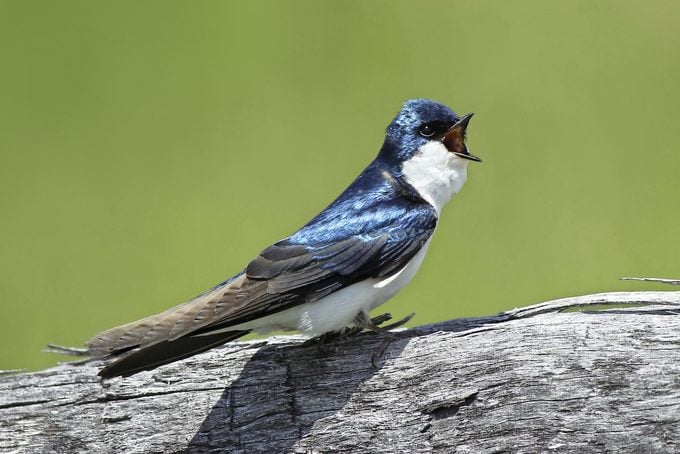
Devoted bluebird fans have put out vast numbers of nest boxes all across the continent. Learn how to choose the best location for a bluebird house. The bluebirds can’t use all of them, so many of those boxes are occupied by tree swallows every year. And the swallows also have their own fans who put out boxes specifically for them in favored spots, often where open fields are close to ponds or rivers.
Violet-Green Swallow
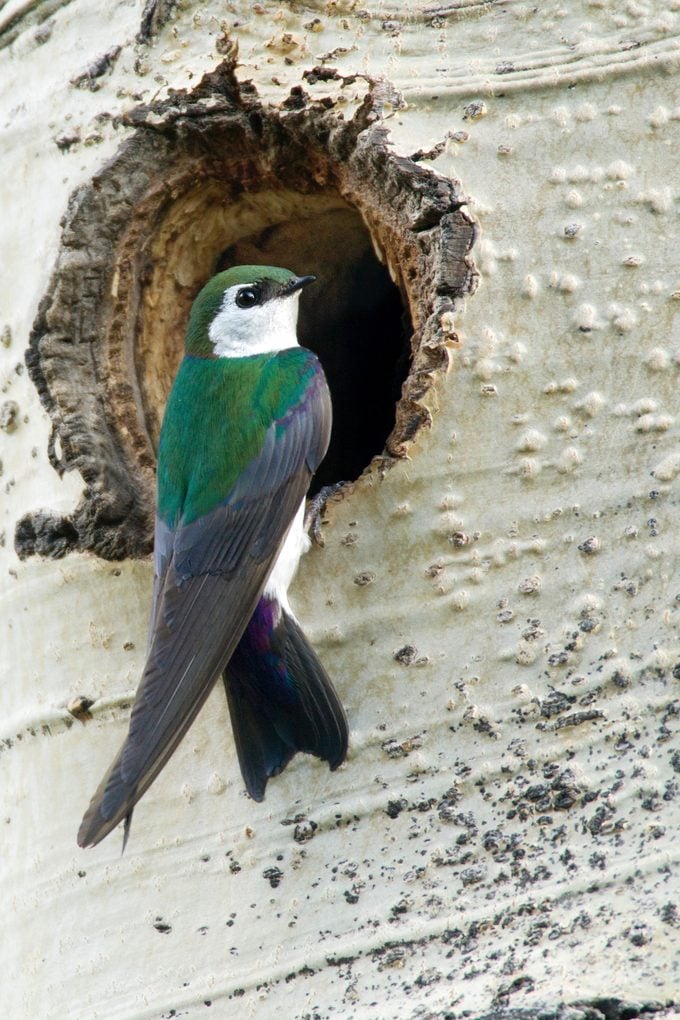
The colorful violet-green swallow, another cavity nester, has a brighter mix of colors on the back and more white on the face. Unlike the tree swallow, which is found from coast to coast, the violet-green is a specialty of the Far West. Violet-green swallows often choose to nest in a hole made by a woodpecker. It also uses nest boxes that are designed for bluebirds.
Bank Swallow and Rough-Winged Swallow
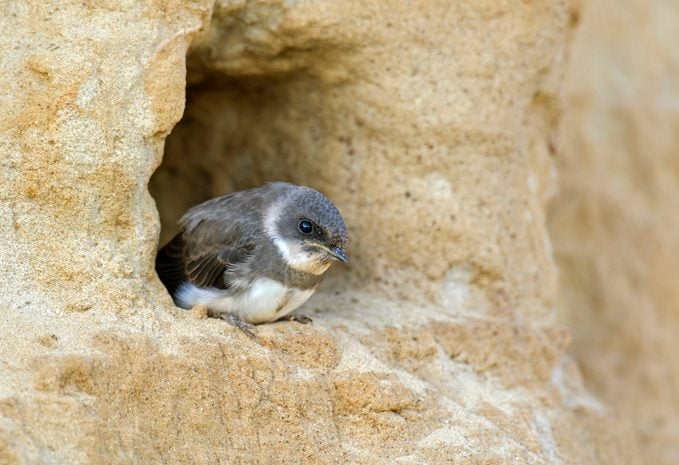
Two more kinds of swallows nest in holes, but not holes in trees. Both the bank swallow and the northern rough-winged swallow are shades of brown. This color camouflages them against the dirt banks where they dig and place their nests.
Bank swallows are highly sociable, forming colonies where up to a thousand underground tunnels may be crammed close together. Sometimes they choose the edges of man-made quarries, in locations where no natural dirt banks are available. In late summer, after nesting season ends, flocks of hundreds of bank swallows gather near lakes or marshes.
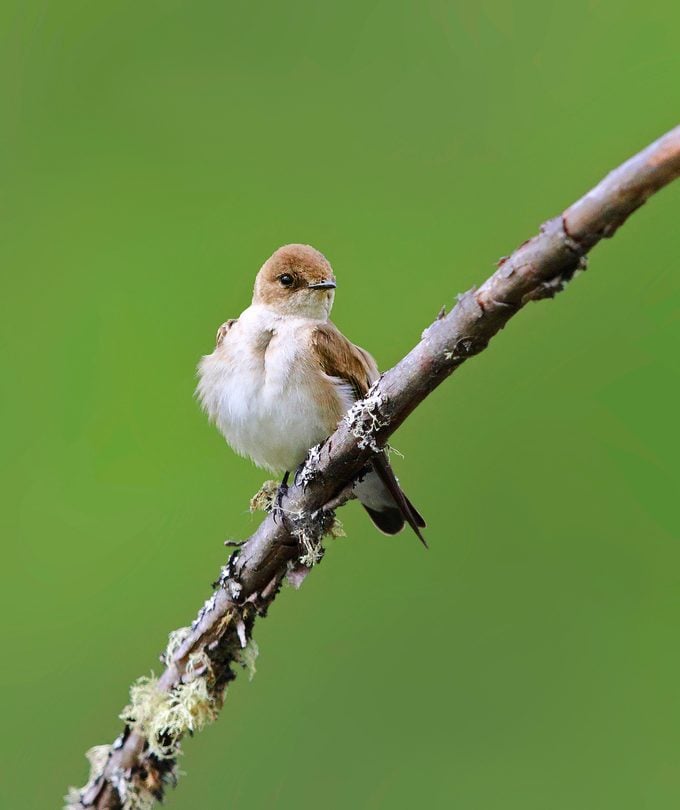
Northern rough-winged swallows are more solitary year-round, often nesting as isolated pairs and never forming large flocks.
Purple Martin
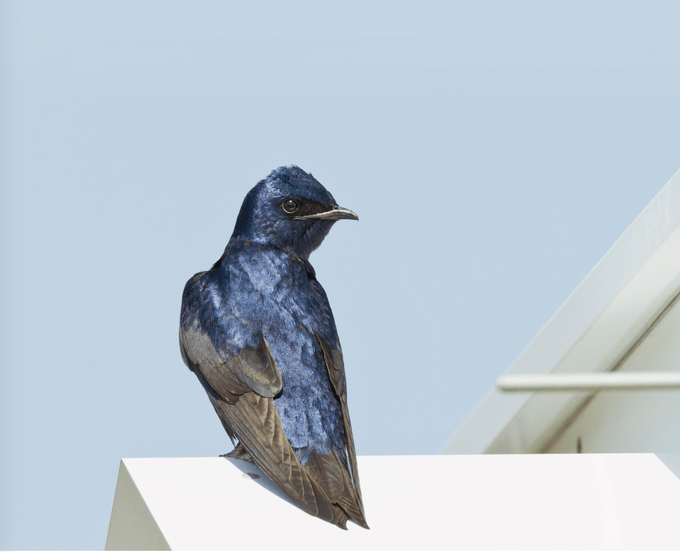
These birds are the largest swallows in North America, and arguably the most popular. Everywhere east of the Rockies in the United States and in southern Canada, homeowners put up elaborate multi-roomed houses, hoping to attract a colony of nesting purple martins.
Early spring migrants, purple martins come back from their winter haunts in South America. The purplish black males usually arrive before the paler females, and both reward their human hosts with lively activity and rich musical calls throughout the spring and summer.
In the West, where they are much less numerous, many purple martins use traditional nest sites in tree holes. In the Southwest, they use holes in giant cactuses. But in the East, almost all martins nest in houses that people put up just for them. Want to make your own abode for these birds? Here’s how to make a DIY purple martin gourd house.
It’s no wonder that many people are fascinated by purple martins and other members of the swallow bird family. With their graceful flight and gregarious nature, swallows make lovely wild bird neighbors.
